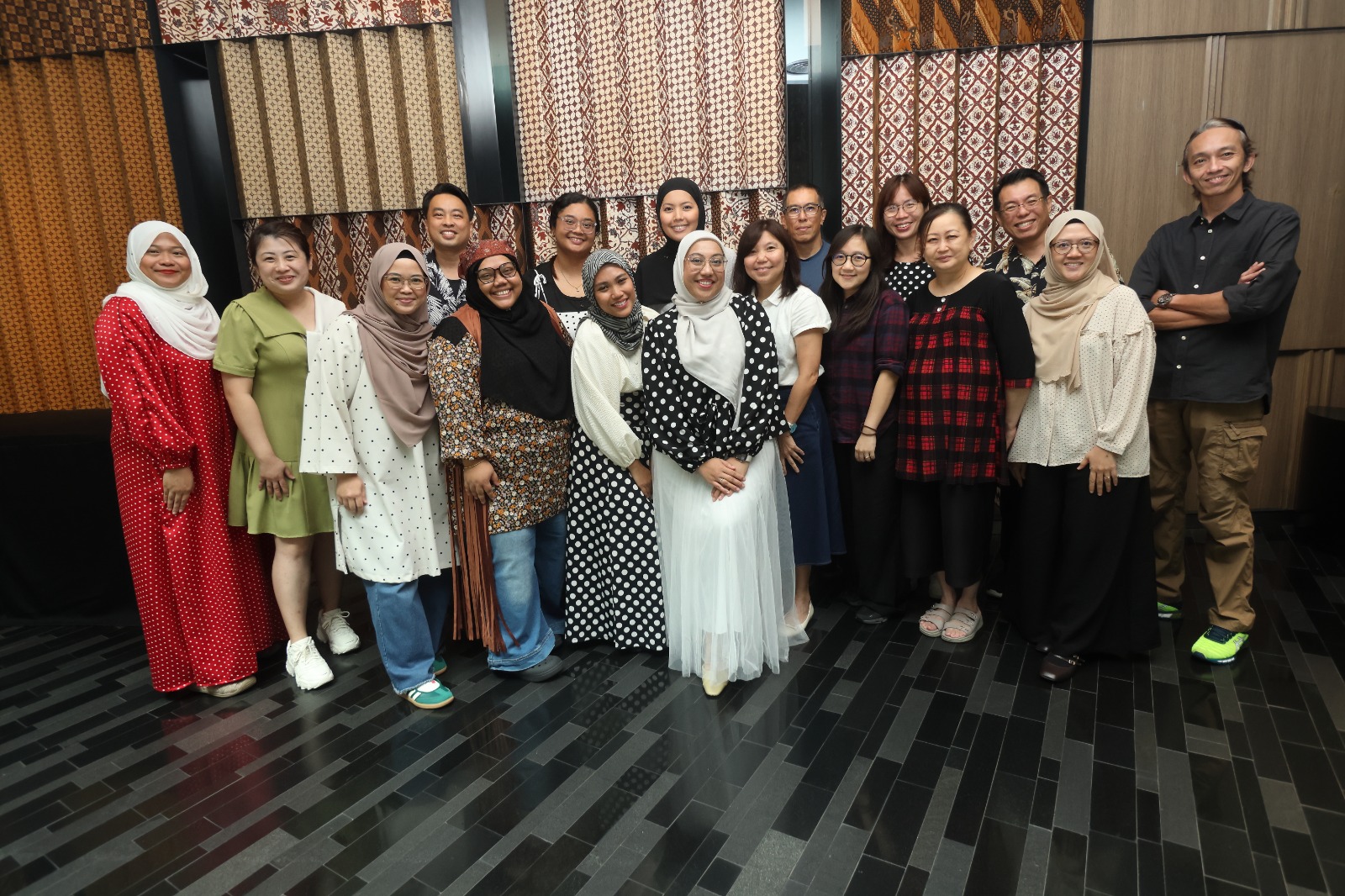Craft & Technology

Teachers
|
Designation |
Name |
|---|---|
|
Head of Department/Craft & Technology |
Mr Benjamin Low |
|
Subject Head/Design & Technology |
Mr Lee Kwee Wei |
|
Senior Teacher/Art |
Mdm Tan Shin Shin |
|
Assistant Year Head |
Ms Tang Zhuo Min, Rachel |
|
Teachers |
Mr Koh Gim Koon |
|
Mdm Krystal Lee Shen Yee |
|
|
Mdm Noor Fadilah Wahab |
|
|
Mdm Norfatihah Hanim Norazian |
|
|
Mdm Nurlina Ibrahim |
|
|
Mr Sng Ah Soon |
|
|
Ms Suriyana Jum'ani |
|
|
Mdm Tan Yoke Leng |
|
|
Mdm Warda Mohamed Shariff |
|
|
D&T TSO |
Mr Abdul Nadzir |
|
D&T TSO |
Mr Chow Siew Leong |
|
D&T TSO / Maker Faire Support Staff |
Mr Mohd Yusoff Rahamattula Sahib |
Vision
Every student a creative creator
Mission
To nurture in every student a creative spark
Key Programmes
Cognitive apprenticeship approach to develop creative confidence in every student.
The Craft and Technology department uses the Cognitive Apprenticeship Model as a framework for active learning and to make thinking visible. The Cognitive Apprenticeship model consists of Modeling, Coaching, Scaffolding, Fading and Reflection.
Modeling and Coaching: Through online subject portals, SLS and Google classrooms, instructional videos and just-in-time coaching are made readily available to students for asynchronous learning. This allows students to take learning beyond their classrooms.
Scaffolding and Fading: C&T department programmes are designed to help students learn independently and progressively. Online resources, resource booklets and activities are carefully planned and designed each year to scaffold learning. Through fading, students are given opportunities to take ownership of their own learning to be independent and/or self-directed learners.
Reflection: Both staff and students carry a mindset of life-long learning through regular reflections. Staff have weekly professional development discussions to review and improve C&T department programmes. Students are also given opportunities to consistently reflect on their own learning at critical junctures. These efforts reflect our strong commitment to nurture students’ creativity and inventive skills in the Arts and Applied Sciences; to make every student a creative thinker.
Art Programme 🎨✨
At Tampines Secondary School, Art is about more than making pictures – it’s about nurturing creativity, confidence, and a deeper way of seeing the world. Through Inquiry-Based Learning, students explore materials, ideas, and cultures while building essential life skills in creativity, problem-solving, and collaboration.
|
Secondary 1: Exploring Possibilities |
|---|
|
Students begin their art journey by experimenting with a wide range of materials, tools, and media. They express personal ideas and experiences through hands-on projects while working with classmates to create and present their art.
|
|
Secondary 2: Connecting with the World |
|
Students build confidence in observation and interpretation, learning to ask questions and make meaning through visuals. They explore both local and international artworks, drawing inspiration to create works that reflect their own identities and perspectives.
|
|
Upper Secondary: Confident Young Artists |
|
At the upper levels, students deepen their appreciation of the arts while developing technical mastery and creative problem-solving. The programme encourages them to take bold artistic risks, reflect on their growth, and showcase their achievements. 🎯 Our Goals:
Our graduates leave not only as skilled young artists but as innovative thinkers ready to thrive in any field. Visit Art Unit's Microsite for more information. |
Design & Technology Programme 🛠️✨
In D&T, students grow into creative thinkers, makers, and problem-solvers. Through hands-on design-and-make projects, they transform ideas into practical solutions while gaining confidence, resilience, and future-ready skills.
|
Secondary 1: Building Foundations |
|---|
|
Students begin their D&T journey by exploring sketching and simple ideation techniques, learning to prototype safely with basic materials.
|
|
Secondary 2: Expanding Creativity |
|
Students strengthen design skills and experiment with new materials while being introduced to simple electronics.
|
|
Secondary 3: Applying the Design Process |
|
Students take on more complex projects, building confidence in design sketching, prototyping, and applying the design process to solve real needs. |
|
Secondary 4: Confident Designers |
|
At the final stage, students refine their making skills and complete coursework that showcases their creativity, technical ability, and problem-solving. They leave with the skills and mindset of innovators ready for the future. 🎯 Our Goals:
Visit Design & Technology Unit's microsite for more information. |
Nutrition & Food Science Programme 🍎👩🍳
Our Food & Consumer Education (FCE) and Nutrition & Food Science (NFS) programmes equip students with the skills and knowledge to live healthier, smarter, and more sustainable lives. Students don’t just learn to cook – they develop essential life skills in nutrition, consumer awareness, and financial literacy.
|
Lower Secondary: Food & Consumer Education (FCE) |
|---|
|
At the lower secondary level, students gain practical skills and knowledge to make informed lifestyle choices.
|
|
Upper Secondary (Normal Academic): Nutrition & Food Science (NFS) |
|
At the upper secondary level, students deepen their understanding of food, health, and innovation. They learn to connect nutrition knowledge with real-world health challenges while developing creativity in food science.
🎯 Our Goals:
Visit Nutrition & Food Science Unit’s microsite for more information. |
Music Programme 🎶✨
Our Music programme nurtures creativity, confidence, and cultural appreciation while equipping students with practical skills in performance, composition, and digital music-making. Students explore a wide range of instruments, genres, and technologies, preparing them for both performance and appreciation of music in today’s world.
|
Secondary 1: Discovering Music |
|---|
|
Students are introduced to fundamental musical and instrumental skills while exploring music from diverse cultures.
|
|
Secondary 2: Creating and Performing |
|
Students expand their music-making through technology and collaborative performance, culminating in the exciting iPad Band Project.
🎯 Our Goals:
Visit Music Unit’s microsite for more information. |
Highlights & Achievements
-
D&T Awards (2025) - Creative Aesthetics Award for “Zoom & Boom” project
Gallery

